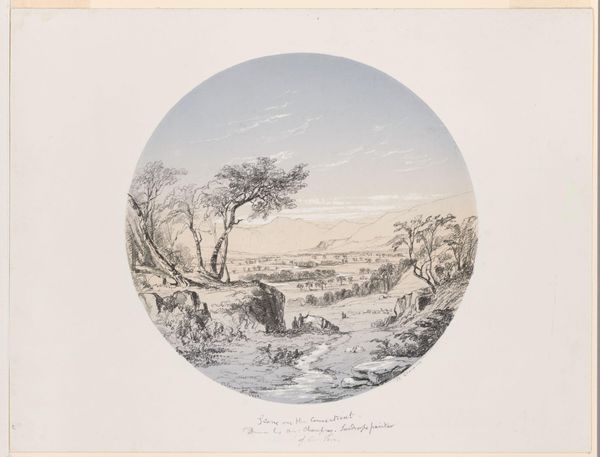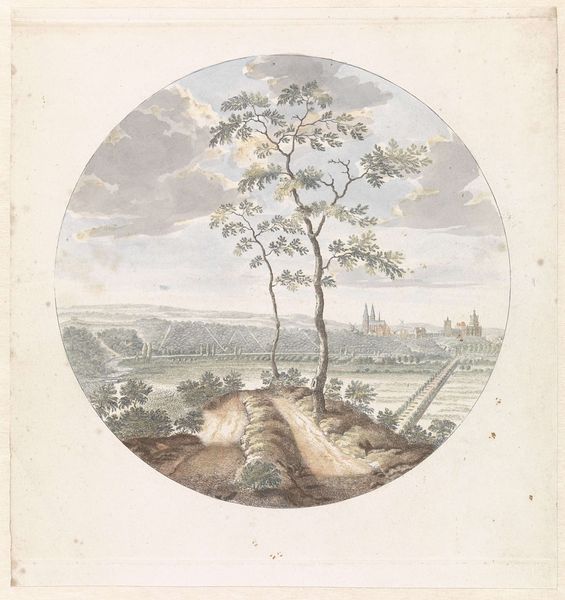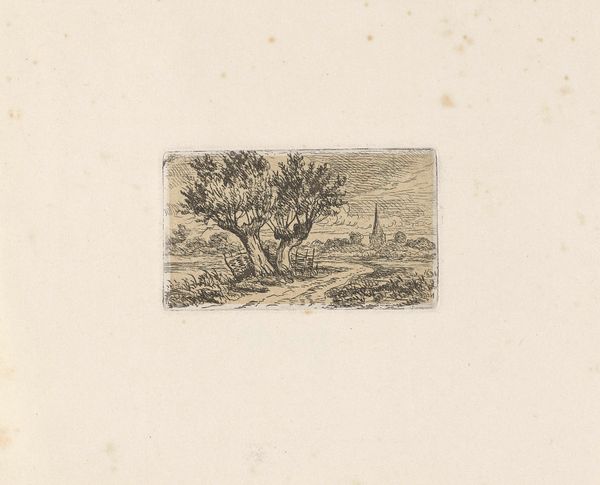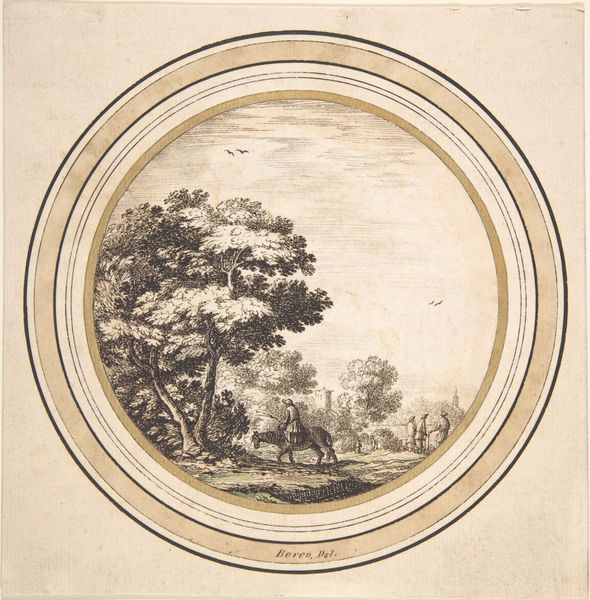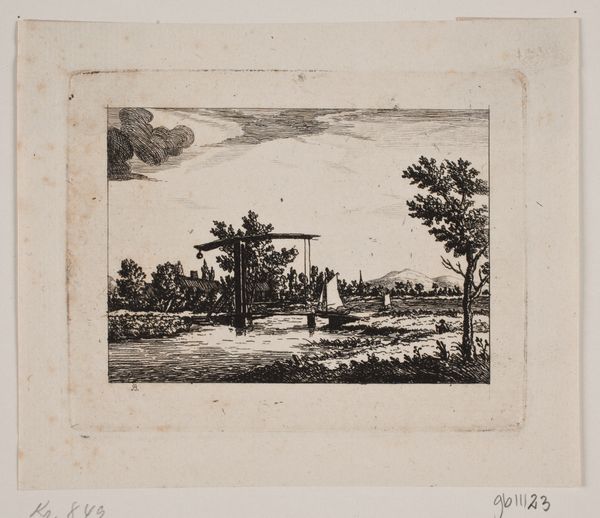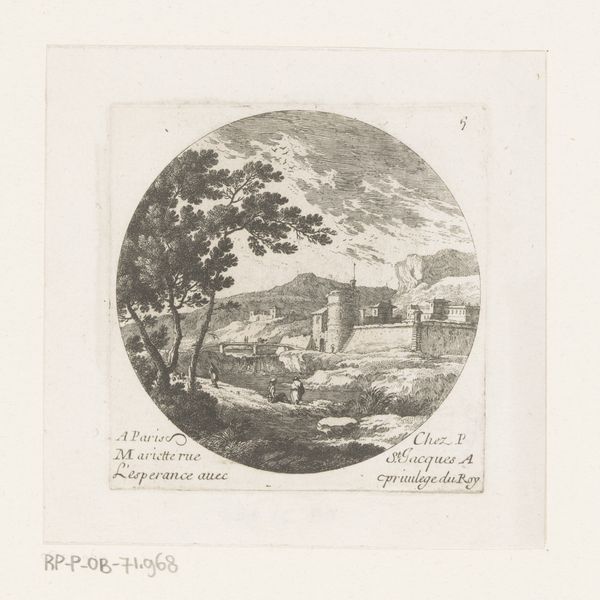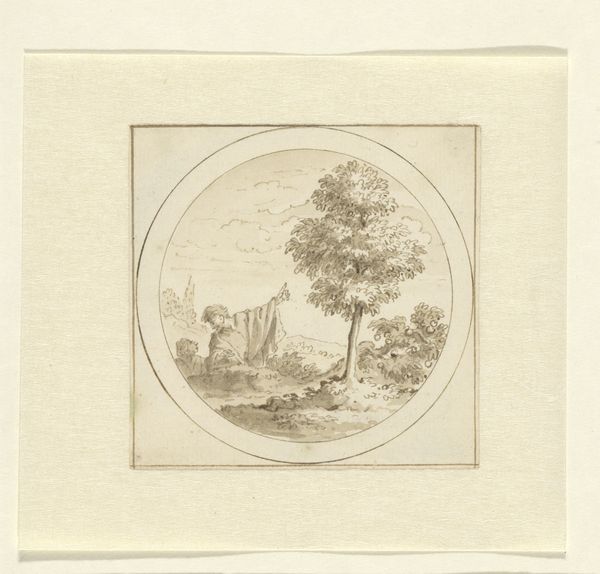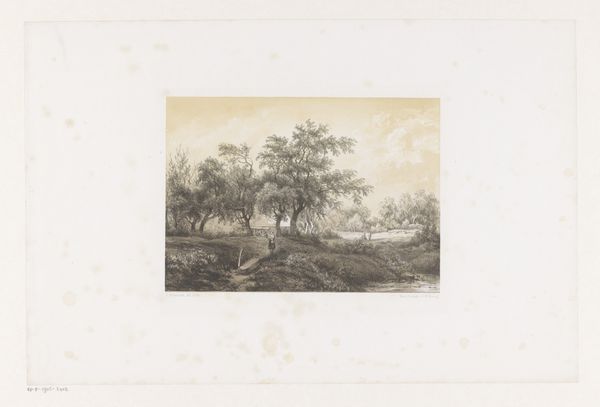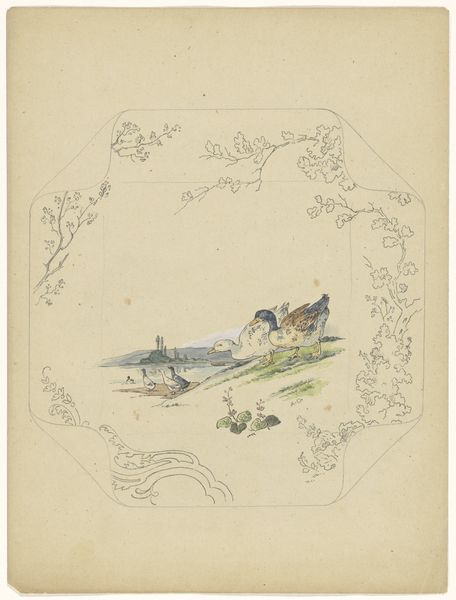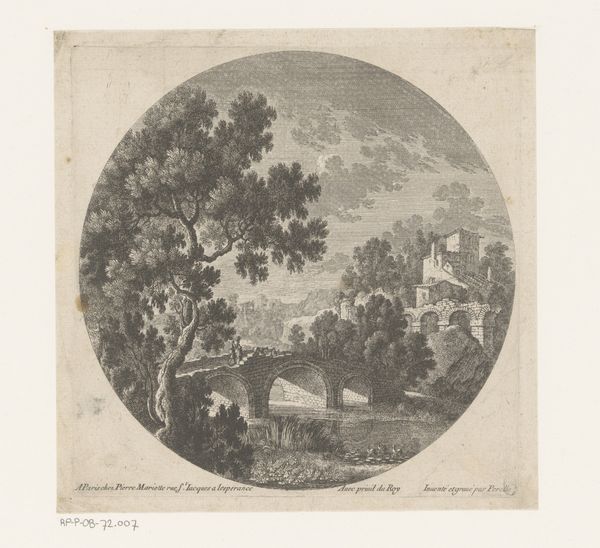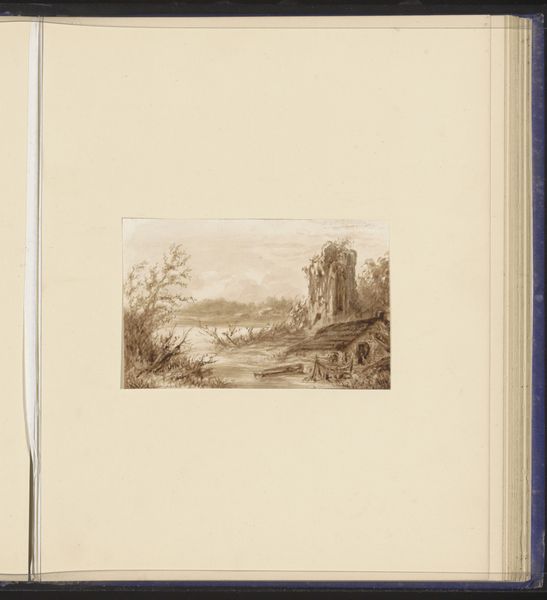
View of the Obelisk of Thutmosis III Seen from the Walls of Alexandria 1671 - 1703
0:00
0:00
drawing, coloured-pencil, print, watercolor
#
drawing
#
coloured-pencil
# print
#
landscape
#
watercolor
#
coloured pencil
#
ancient-mediterranean
#
watercolor
Dimensions: sheet: 13 11/16 x 13 5/8 in. (34.7 x 34.6 cm)
Copyright: Public Domain
Curator: This drawing, titled "View of the Obelisk of Thutmosis III Seen from the Walls of Alexandria", dates from 1671 to 1703 and is attributed to Jan van Call. It employs watercolor and coloured pencil and seems to have been printed as well. What are your first impressions? Editor: It’s remarkably serene. There’s a sense of looking at a staged tableau, almost like a theater set, rendered in delicate washes of color. I notice the circular frame—does that reflect a contemporary trend in presentation, perhaps imitating the view from a telescope or a camera obscura? Curator: Precisely. The means of production of these images were changing. Remember, prints, drawings and watercolors at this time provided a crucial method for disseminating images, especially those of faraway lands. And this work’s very medium—colored pencil and watercolor—speak to ease of transport. Editor: Yes, the travel! It’s dominated by that central obelisk. Obelisks carry such powerful connotations – symbols of Egyptian sun worship, appropriated by the Romans, and then becoming potent markers of imperial power and knowledge in the West. I wonder what its presence meant to viewers at the time. Curator: I’m curious about the artistic labor itself. This drawing documents a specific site and the act of witnessing the remnants of an ancient empire became a sort of commodity, fueling both artistic production and armchair tourism back home. The relatively loose and swift application of the materials suggests efficient documentation for eventual reproduction. Editor: That single figure, standing so small in the landscape, seems almost dwarfed by both the obelisk and the imposing walls. He's not simply an observer, though, but an implied representative. His presence activates the symbolism and speaks to the ongoing human relationship with these ancient monuments. He’s the crucial connective tissue between epochs. Curator: Absolutely. The strategic positioning of the viewer in relation to the land shaped an understanding and appropriation of the "Orient" – its ancient wonders and its current inhabitants, all ready for Western consumption and exploitation. Editor: Thinking about it further, I see how the artist captured not just a physical location, but a layered history of conquest and cultural adaptation. The obelisk becomes a silent witness, a vertical vector linking past and present. Curator: By examining both the symbols present, and the method used to produce the drawing, we start to understand this artwork represents not just a place but a whole economic system and associated worldview in 17th-century Europe. Editor: Indeed, what started as a quiet landscape has transformed into a loud articulation of intertwined histories.
Comments
No comments
Be the first to comment and join the conversation on the ultimate creative platform.
